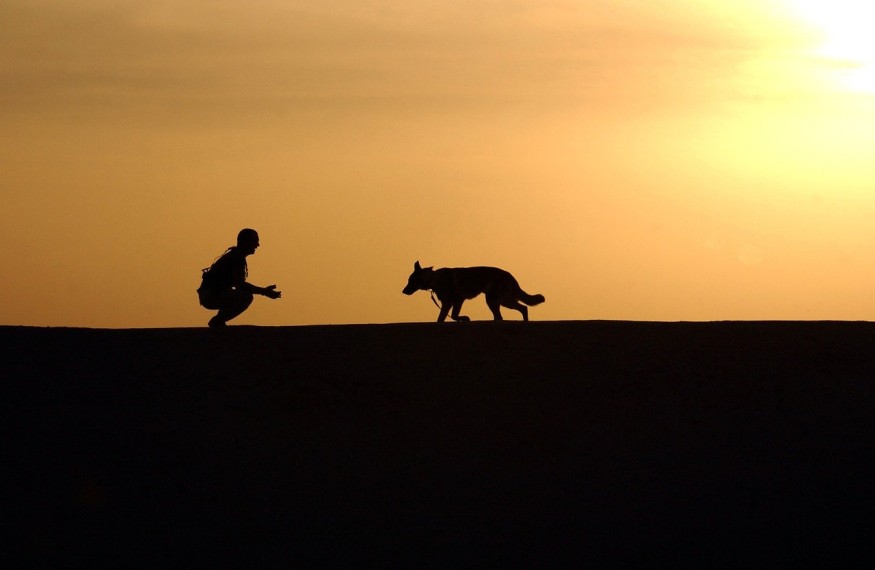
Dog training is more than just suggesting to your dog that he should stop doing what he is doing. Dog training is confidence; you teach him how to feel safe and know you're going to take care of him. It's also not generally a complicated process, but it's a process that requires a lot of patience, and the ability to interpret the types of training techniques are most appropriate for the particular dog you're training. This specific training is a practice we engage with our dog and not to our dogs. For every dog or puppy, we want to train, the most important thing is to get started today because it is a journey of a process.
To train a dog, there is a need for the right equipment and patience to get the job done. Equipment is an essential part of the training, and it has to make the dog feel comfortable. Be sure to check leather dog equipment online with your veterinarian to make sure you make the right choice when purchasing your dog training equipment.
CHECK IT FOR:
Make sure you close the collar and the buckles correctly and securely.
If your dog is a puppy, make sure it fits well and isn't big enough.
Check all for wear and tear, and particularly for chews and rips where the mouth of the dog can touch/reach it.
ESSENTIAL AND SAFETY DOG TRAINING EQUIPMENT:
A collar with a clip or buckle attached to it. It should be loose but not too much. It's not supposed to have a choke, remember that your dog is in training and will need some patience and space.
A lead of about four to six feet is perfect for the job. If the lead is too short, the dog will feel uncomfortable and trapped if it is too long, you will find it difficult to control the dog and express your wishes and orders. The leads are made of different types of materials, but the best and easiest to use are canvas, leather, or nylon. Do not use a chain lead when you are exercising your dog.
Also, a poop scoop is required when you go out with your dog. Each time you take your dog out, some sort of poop scoop is also essential. These have many styles and are made of various materials.
EFFECTIVE TIPS ON TRAINING YOUR DOG
Every teaching requires attention if you're teaching humans the attention of the person is needed, but in this case, you're teaching an animal off-which it's attention is required. If your dog doesn't pay attention to you, the training will all be in vain, no matter how many times you show him something or ask him for something. The first trick to teach your dog is to get his attention with a little treat. If he listens to you, you can start with simple commands such as "Sit," "Down," "Roll Over," and "Stay." You should move to the more complex directions like "Fetch" once these are mastered. Consistency is the secret to your dog's training success, but it is also essential to initially restrict your training time to 15 minutes a day.
The training environment must be safe, quiet, and distraction-free so that the attention of your dog stays firmly fixed upon you. Start teaching a new behavior always in an environment of minimal distractions, like your living room. If your dog has learned to behave inside your home, slowly move to places with more distractions-for instance, an exercise in your yard, then on a quiet street, then in a park, later on, a busier street with people walking about, and so forth.
Treat your dog with his favorite food, a hug, or even a stroll as pet masters your commands should be one by one. Reward and positive reinforcement are the keys to get your pet motivated. When he is earning a treat or receiving love, he will want to repeat his acts and follow a particular order. Nonetheless, persevere whether he roams away or refuses any instructions. If your dog is not doing what you are asking him to do, go back to the point where he's been good. He is neither stubborn nor disobedient. Most possibly, he doesn't know what you want him to do. e.g., if your dog knows how to sit and stay for ten seconds, but will not do it for 20 seconds, go back to ten seconds and build on that slowly. Getting going in crawl steps is safer than setting the dog up for failure.
Fully or total patience is required when teaching a dog, and giving up halfway does nothing-for you both. Do not give him what he wants unless he begins to obey your commands. But consistency is the key to your dog's effective training.
If your dog shows any signs of provocation, to prevent escalation, always contact a trainer sooner rather than later. Choose a skilled trainer who uses strength-free, constructive strengthening techniques when you need more assistance in training your dog.
If your dog doesn't feel good, this may affect his behavior, but in this situation, training isn't the answer. To keep your dog safe, feed him on a high-quality diet, provide regular physical activity and play, and encourage socialization, mental stimulation, and enough rest and quiet time. Has your dog tested by a veterinarian regularly? When you note a sudden change in his attitude or any indications that he doesn't feel right, a veterinary examination is required before you adopt a training program. Training the dog has endurance, discipline, and plenty of bonuses to it.
Make the workout enjoyable and optimistic, and he will react the way you want him!
© 2025 NatureWorldNews.com All rights reserved. Do not reproduce without permission.





